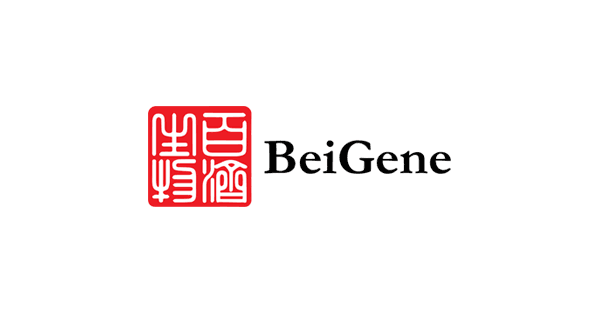CAMBRIDGE, Mass. & BEIJING– BeiGene (NASDAQ: BGNE; HKEX: 06160), a global, science-driven biotechnology company focused on developing innovative and affordable medicines to improve treatment outcomes and access for patients worldwide, today announced results from the RATIONALE 309 trial of tislelizumab versus placebo in combination with chemotherapy as a first-line treatment for patients with recurrent or metastatic nasopharyngeal cancer (RM-NPC) at the European Society for Medical Oncology Immuno-Oncology (ESMO I-O) Congress 2021, taking place on December 8-11, 2021.
“We are pleased that tislelizumab in combination with chemotherapy demonstrated a statistically significant progression-free survival benefit for patients with RM-NPC over chemotherapy,” commented Yong (Ben) Ben, M.D., Chief Medical Officer, Immuno-Oncology at BeiGene. “A filing based on these results is currently under review in China, where NPC as an endemic disease remains a significant unmet medical need. We look forward to continued discussions with the health authority and are working to bring this important immunotherapy to patients in China as soon as we can.”
In August 2021, the Center for Drug Evaluation (CDE) of the China National Medical Products Administration (NMPA) accepted a supplement Biologics License Application (sBLA) for tislelizumab in combination with chemotherapy as a first-line treatment for patients with RM-NPC based on results from the interim analysis of the RATIONALE 309 trial.
Results from RATIONALE 309: Tislelizumab vs. Placebo in Combination with Chemotherapy in First-Line RM-NPC
Proffered Paper: 121O
RATIONALE 309 is a multicenter, randomized, double-blind, placebo-controlled Phase 3 clinical trial (NCT03924986) designed to evaluate the efficacy and safety of tislelizumab combined with gemcitabine and cisplatin (Arm A) versus placebo combined with gemcitabine and cisplatin (Arm B) as a first-line treatment for patients with RM-NPC. The primary endpoint of the trial is progression-free survival (PFS) in the intent-to-treat (ITT) population as assessed by an independent review committee (IRC) per RECIST v1.1 criteria; secondary endpoints include IRC-assessed overall response rate (ORR), IRC-assessed duration of response (DoR), overall survival (OS), investigator-assessed PFS, time to second objective disease progression (PFS2), and safety. A total of 263 patients were enrolled in the trial, with 131 and 132 randomized to Arm A and Arm B, respectively, with balanced baseline characteristics between both arms.
“In the RATIONALE 309 trial, the addition of tislelizumab to chemotherapy significantly prolonged PFS for previously untreated patients with RM-NPC, an aggressive head and neck cancer prevalent in Asia, with consistent survival benefit across patient subgroups. Safety results in both arms remained similar to known risks and no new safety signals were identified. The promising results support the potential of tislelizumab in combination with chemotherapy as a new standard of care in China for the first-line treatment of RM-NPC,” commented Yunpeng Yang, M.D., Professor at Sun Yat-sen University Cancer Center and principal investigator of the study.
As of March 26, 2021, with a median follow-up time of 10.0 months, RATIONALE 309 achieved the primary endpoint at the interim analysis, with the combination of tislelizumab and chemotherapy demonstrating a statistically significant improvement in PFS, compared to the combination of placebo and chemotherapy, per IRC assessment. Efficacy results included:
- The median PFS was 9.2 months (95% CI: 7.6, 10.1) in Arm A, compared to 7.4 months (95% CI: 5.6, 7.5) in Arm B, with a stratified hazard ratio (HR) of 0.52 (95% CI: 0.38, 0.73) and stratified log-rank p < 0.0001, as assessed by IRC;
- The PFS rate at six, nine, and 12 months was 66.1% (95% CI 56.9, 73.8), 51.0% (95% CI: 41.1, 60.1), and 35.7% (95% CI: 25.2, 46.4) in Arm A, compared to 53.0% (95% CI: 43.4, 61.8), 21.6% (95% CI: 13.5, 30.9), and 12.2% (95% CI: 5.6, 21.4) in Arm B, as assessed by IRC;
- The median PFS was 9.8 months (95% CI: 7.8, 11.9) in Arm A, compared to 7.6 months (95% CI: 6.6, 7.8) in Arm B, with a stratified HR of 0.54 (95% CI: 0.38, 0.76), as assessed by investigators;
- Consistent PFS benefit was observed in most subgroups, including disease status, baseline liver metastases, and gender;
- The ORR and complete response (CR) rate were 69.5% and 16.0% in Arm A, compared to 55.3% and 6.8% in Arm B, as assessed by IRC; and
- The median DoR was 8.5 months (95% CI: 6.5, NE), compared to 6.1 months (95% CI: 4.7, 6.2) as assessed by IRC.
The safety profile of tislelizumab and chemotherapy combination was manageable, consistent with known risks of each treatment agent. Safety results included:
- All patients (100%) in Arm A experienced at least one treatment-emergent adverse event (TEAE) of any grade, with the most common (≥20.0%) being anemia, decreased white blood cell count, decreased neutrophil count, nausea, decreased platelet count, decreased appetite, vomiting, constipation, leukopenia, neutropenia, rash, hypothyroidism, increased alanine aminotransferase (ALT), hyponatremia, increased blood creatinine, increased aspartate aminotransferase (AST), malaise, and pyrexia;
- In comparison, 131 patients (99.2%) in Arm B experienced at least one TEAE of any grade, with the most common (≥20.0%) being anemia, nausea, decreased white blood cell count, decreased platelet count, decreased neutrophil count, vomiting, decreased appetite, constipation, leukopenia, neutropenia, hyponatremia, malaise, hypokalemia, rash, increased AST, and hypoalbuminemia;
- Grade ≥3 TEAEs were reported in 106 patients (80.9%) in Arm A, compared to 108 patients (81.8%) in Arm B;
- Serious TEAEs were reported in 36 patients (27.5%) in Arm A, compared to 44 patients (33.3%) in Arm B;
- TEAEs leading to permanent treatment discontinuation and death occurred in 2 patients (1.5%) and 5 patients (3.8%), respectively, in Arm A, compared to 3 patients (2.3%) and 2 patients (1.5%), respectively, in Arm B; and
- In Arm A, 24 patients (18.3%) experienced at least one immune-mediated TEAE of any grade, including 3 patients (2.3%) reporting Grade ≥3 events.



